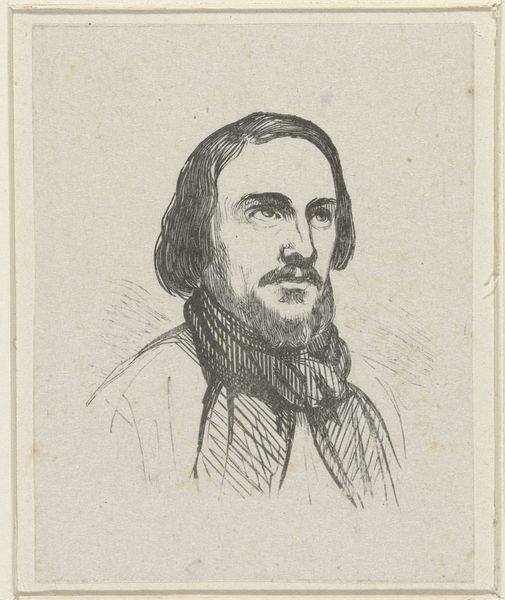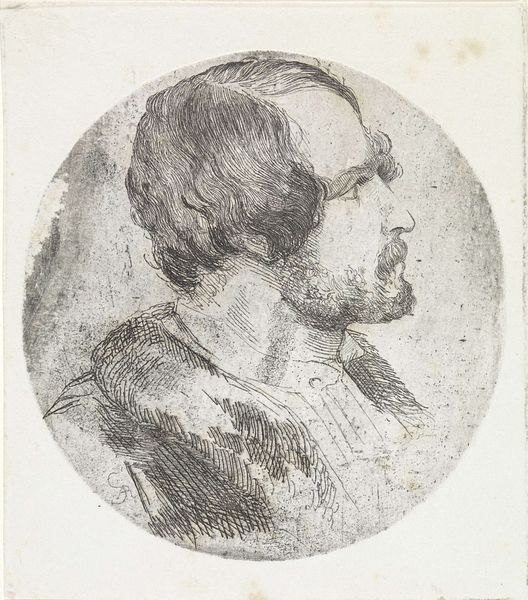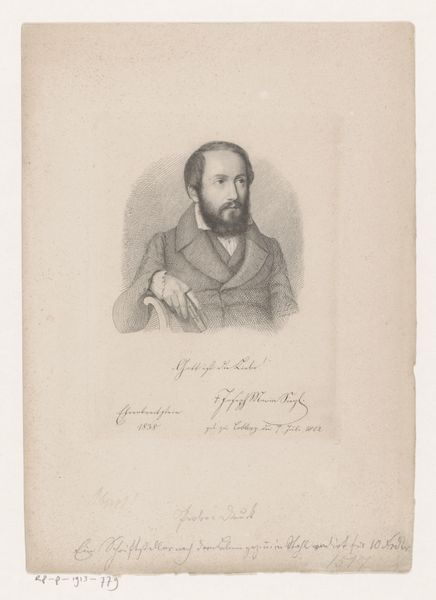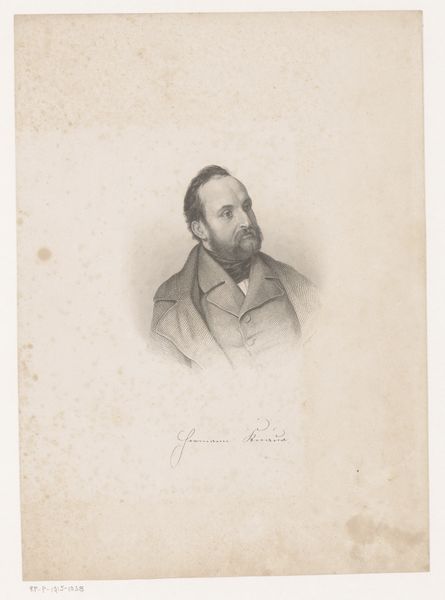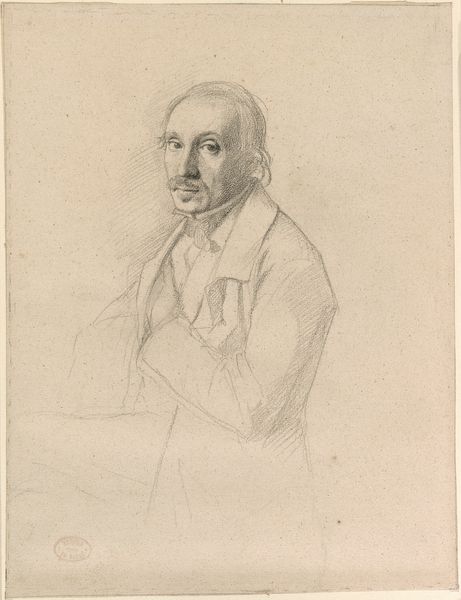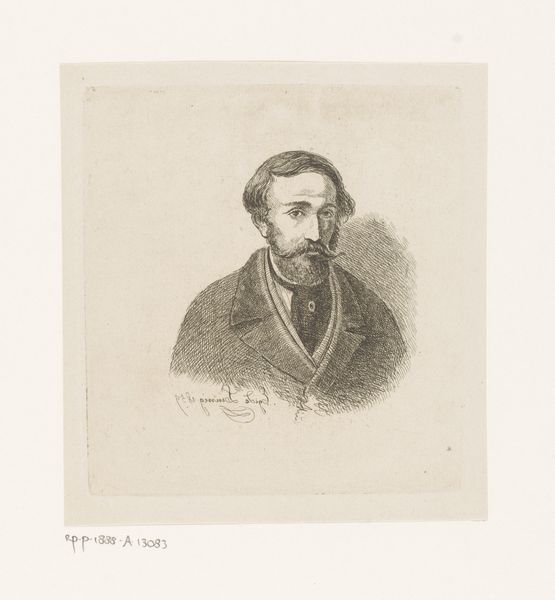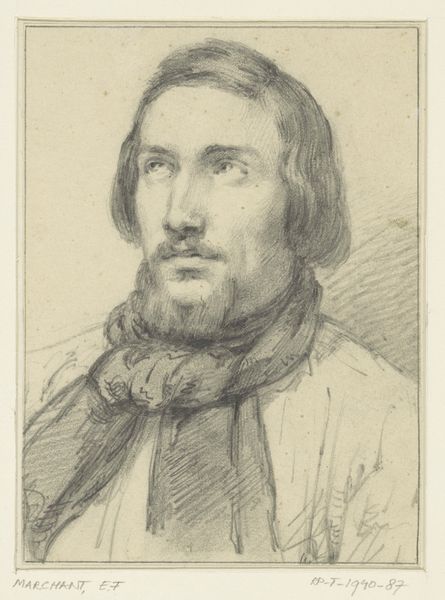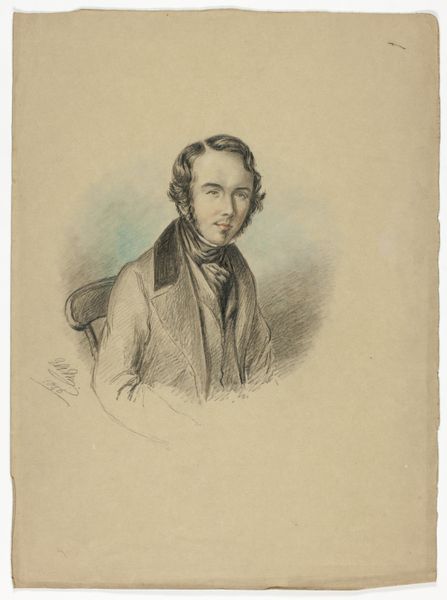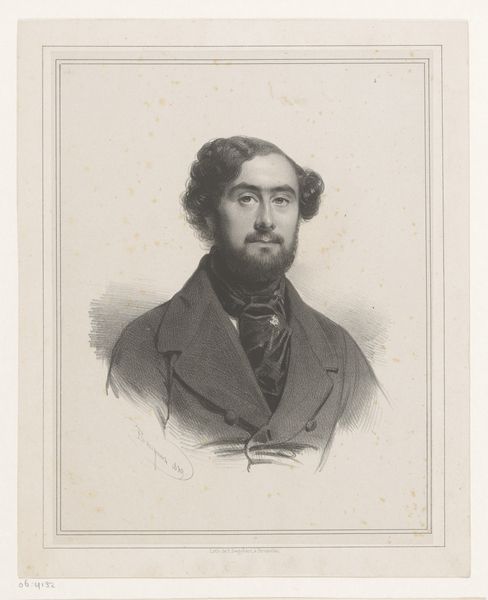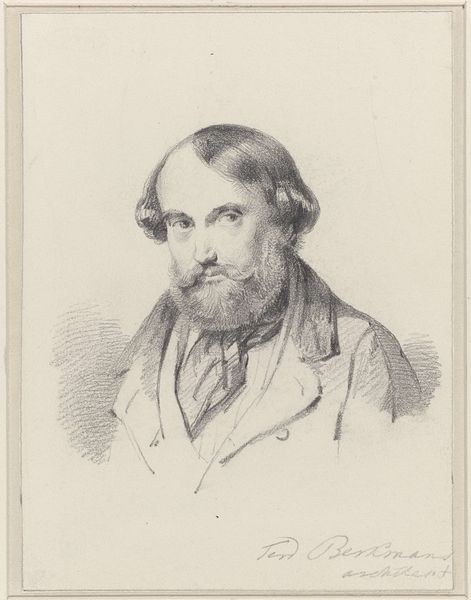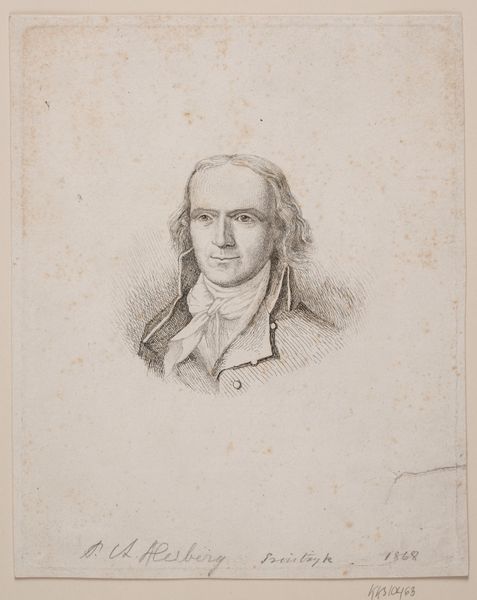
drawing, print, paper, ink, pen
#
portrait
#
drawing
#
self-portrait
# print
#
figuration
#
paper
#
ink
#
romanticism
#
line
#
pen
#
portrait drawing
Dimensions: 225 × 183 mm
Copyright: Public Domain
Curator: Before us, we have George Cruikshank’s "Self-Portrait," rendered using pen and ink on paper. The artwork’s date is unknown. Editor: My initial impression is one of thoughtful introspection. There's a nervous energy in the lines, a sort of controlled chaos around the head and shoulders that suggests a restless mind at work. Curator: Absolutely. The technique is striking, isn’t it? The density of the linework varies greatly. Note how Cruikshank uses short, rapid strokes to delineate the contours of his face and hair, creating areas of shadow and depth. Look at the contrast between the finished details on his face and the implied lines of the body. Editor: I see a connection between his chosen medium and the cultural context of early 19th-century caricature, a field Cruikshank heavily contributed to. His loose style evokes a satirical eye – hinting that beneath the facade of self-presentation there might lie some deeply felt social critique. Can we see the man as the mirror, or simply one reflecting back an unfair society? Curator: Yes, the Romantic-era is alive and well in this depiction! Note how the artist masterfully balances areas of detail and suggestion. The eye is immediately drawn to the carefully rendered facial features—eyes, nose, and mouth—which convey a sense of the subject’s personality, while the looser lines surrounding the face create a dynamic sense of movement. The very sketchiness can tell us what he might have considered worth showing vs. not showing. Editor: Furthermore, his gaze, averted to the side, perhaps implies a subtle resistance or a quiet observation of societal hypocrisies. It reflects a Romantic sensibility—that of individual feeling at odds with, or separate from, prevailing social norms. The unpretentious rendering feels like an act of subversion in and of itself! Curator: That's well put. This drawing encourages us to appreciate the expressive potential inherent in even the simplest of artistic means. It reminds me how an artist’s close study of line and form can be remarkably effective for not just representing likeness but also emotion. Editor: In essence, this "Self-Portrait" resonates as a potent reminder of the socio-political relevance latent within modes of self-representation. The artistic intention seems more aligned to question established aesthetic ideals than to embody pure beauty alone.
Comments
No comments
Be the first to comment and join the conversation on the ultimate creative platform.
